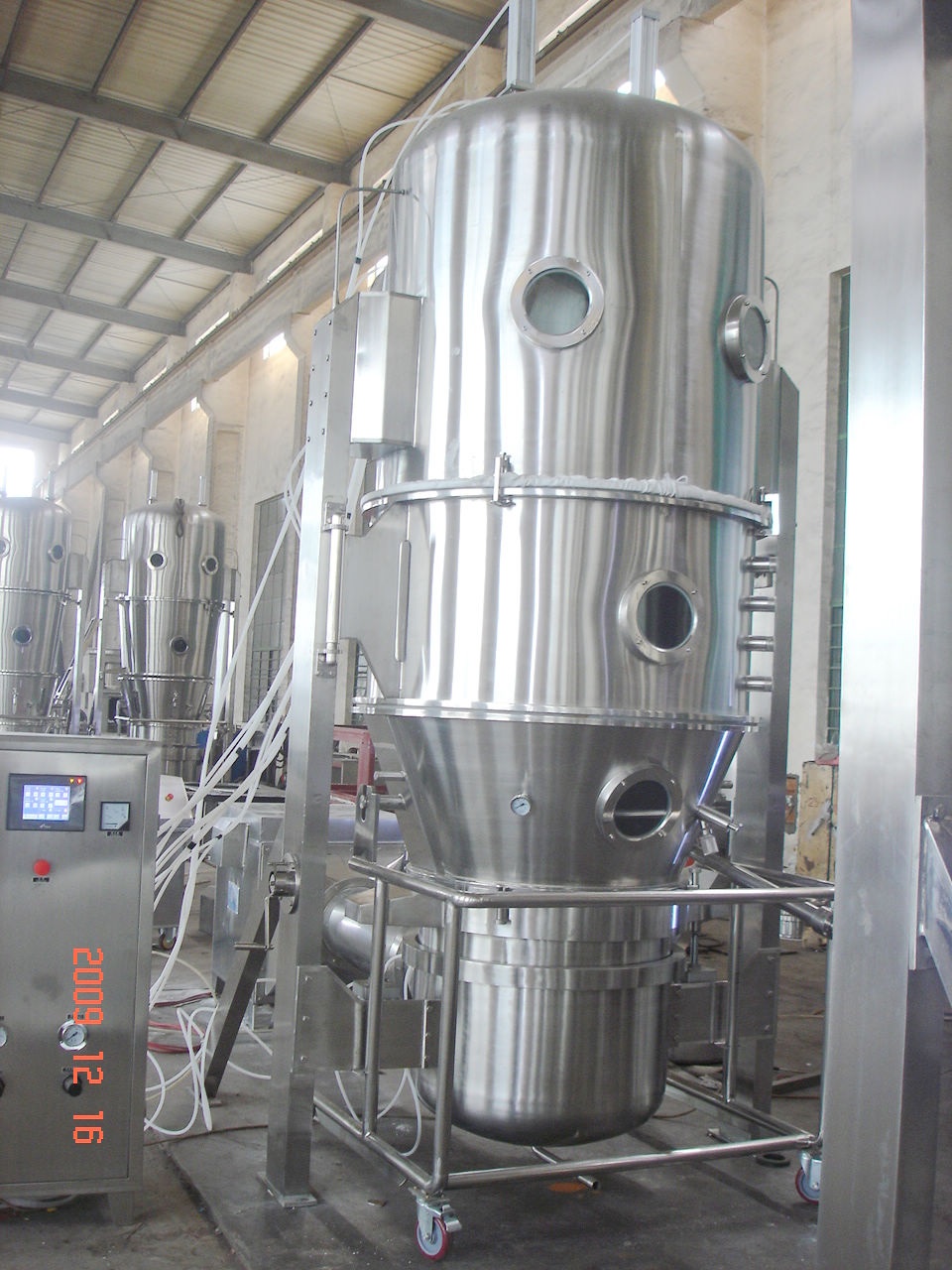
Privacy statement: Your privacy is very important to Us. Our company promises not to disclose your personal information to any external company with out your explicit permission.
A Fluidized Bed Dryer is a bed of solid particles with a stream of gas blowing upward through the particles at a rate high enough to set them in motion. Fluid-bed processing involves drying, cooling, agglomeration, granulation, and coating of particulate materials. As the gas (usually air) travels through the particle bed or product layer under controlled velocity conditions to create a fluidized state, it imparts a fluid-like behavior to the bed and provides rapid mixing of solids.
During fluidized bed drying, particles are freely suspended in the hot-air stream and dehydrated simultaneously by rapid exchange of heat and mass with air, in batch or continuous systems, operating in open cycle involving water evaporation, or closed cycle, which involves mainly organic solvent evaporation.
The fixed and manufacturing costs of fluidized-bed drying are the cheapest after air-drying, and the process is also viable for large-scale continuous production. Besides, the advantages of a fluidized-bed drying over other methods of drying include large-scale continuous production, easy handling of feed and product, lack of mechanical moving parts, rapid exchange of heat and mass between gas and particles that minimizes overheating, rapid mixing of solids, which provides nearly isothermal conditions throughout the fluidized bed, and drying times as short as 4 min compared to a minimum of 3 h for most other drying methods using drying air of the same temperature and relative humidity, and uniform particle moisture contents. In particular, due to the good mixing, and high heat and mass transfer rates, fluidized-bed dryers have been proved to be the most appropriate for drying many types of grain products.
Although fluidized-bed drying can take longer than spray drying, heat inactivation can be minimized and more easily controlled by using relatively low air temperatures. The drying time needed to prepare a product at a desired moisture level oscillates from 1 min to 2 h, depending on the temperature, relative humidity of the drying air, physical and biochemical properties of the material, and viability in the case of active dry yeasts.
Fluid-bed drying is ideal for a wide range of foods, both heat sensitive and nonheat sensitive. However, the use of fluidized-bed dryers is limited because of the irregular particle sizes and the sticky nature of the granulated materials, which can lead to an inhomogeneous bed, agglomerated particles, and a decreased drying rate. Fluidized-bed drying of microorganisms has been studied for the bakers` and wine yeast strain Saccharomyces cerevisiae as a dry-powder formulation. In fact, to manufacture active dry yeast of S. cerevisiae, fluidized-bed drying and its modifications have become the most accepted methods of production on a large scale; this shelf-stable form of yeast has many practical uses in the baking, distilling, wine, and brewing industries. Among the convective drying methods for the preservation of bacteria, the three most promising are spray drying, fluidized-bed drying, and a combination spray granulation. Nevertheless, only a few studies have been made on lactic-acid starter cultures. For example, some studies have been reported employing Lactobacillus strains desiccated with a new drying process, occurring in two stages: the bacteria were first mixed with casein powder to achieve a powdery mixture, and then the mixture was desiccated in a fluidized-bed dryer.
Conversely, the main drawback of fluidized-bed drying is that only granulatable materials can be dried, and, therefore, cells must be entrapped or encapsulated in support materials that should fit to the foods to be fermented, such as skim milk, potato starch, calcium alginate, or casein. Thus, fluid bed drying is suited for powders, granules, agglomerates, and pellets with an average particle size normally between 50 and 5000 microns. This granule, which is a required manufacturing step in the production of many solid-dose products, is cohesive when wet, and has a tendency to form agglomerates. Meanwhile, to improve the fluidity of very fine, light powders or highly elongated particles for successful fluid bed drying, researchers have proposed several techniques including mechanical vibration, bed stirring, and gas pulsation. However, some industries such as the pharmaceutical, do not employ any of these assisting techniques to aid their granule fluidity during drying; rather, the industry attempts to rectify these fluidization phenomena using conical, or tapered, bed geometry in their dryer designs.

April 18, 2024
March 28, 2024
Email to this supplier
April 18, 2024
March 28, 2024

Privacy statement: Your privacy is very important to Us. Our company promises not to disclose your personal information to any external company with out your explicit permission.

Fill in more information so that we can get in touch with you faster
Privacy statement: Your privacy is very important to Us. Our company promises not to disclose your personal information to any external company with out your explicit permission.